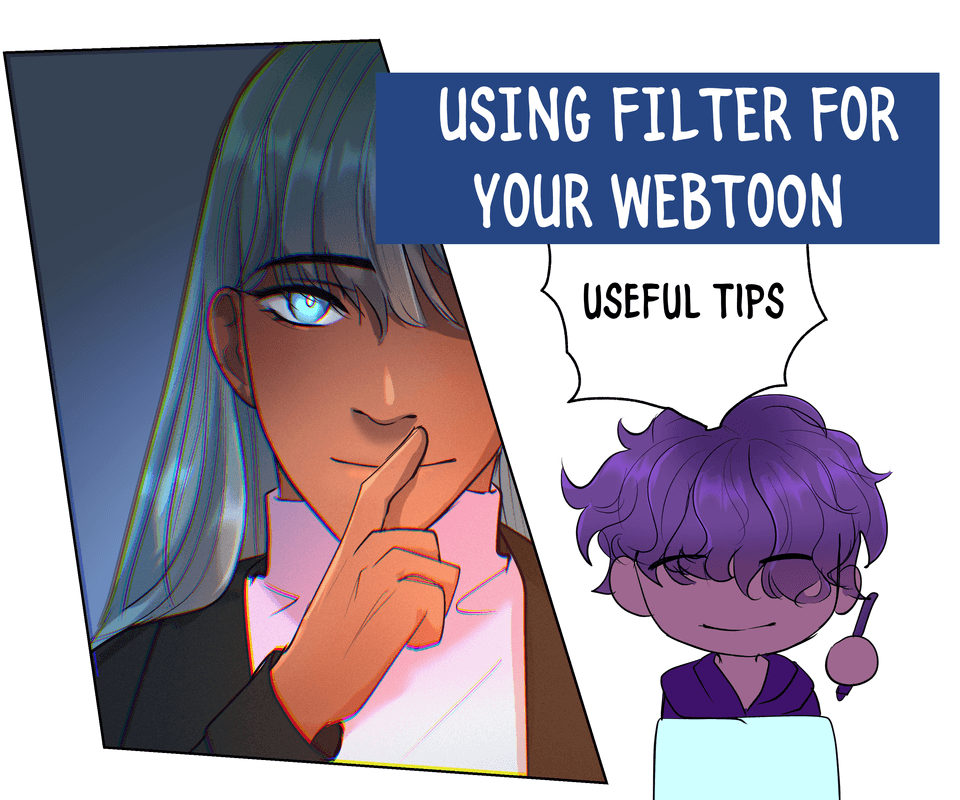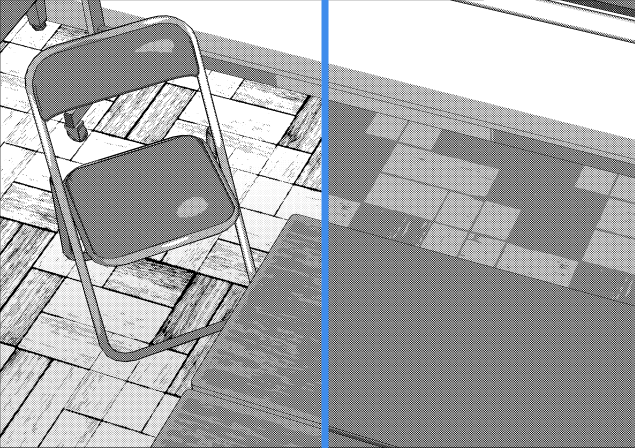The easiest way to make jewelry
The easiest way to make jewelry!
Hello! In this tutorial we will learn how to draw jewelry for your comic from scratch in the easiest and fastest way!
1.Sketch
First, I draw a "dirty" sketch of the future decoration. Neatness does not matter at this stage, the idea itself is important. I looked for inspiration for this work in handmade elven crowns and used them as a reference.
Distinctive features of these crowns are curled thin wires (like twigs) and small natural stones (like glass). I chose hemispheres for stones as if they were cast from epoxy resin / crystals or glass.
I also added pearl beads as decorations to the hair.
Once I have finished the messy sketch, I start dissecting the crown into layers - some details in the foreground, some details in the background. This is a very important stage of work, which will make it easier to understand the fastenings of the elements in the future. It is crucial that the elements are not "glued" to each other on the same layer. The best choice would be to separate all the elements from each other as much as possible. Stones from gold, crystals from beads, etc.
2.Lineart
At this stage it is very important to follow the order and the layers that we set in the previous step. We start painting from the bottom layer, gradually create new ones and paint on them as well.
I use a vector layer with the black stroke option turned on to create the line art. I paint with a white brush with the pressure off - this way the brush size will remain the same. I will add volume in some places at later points in the work.
I turn on the symmetry ruler so that the crown is perfectly symmetrical. At this stage you can turn off the bottom layer with the girl so that it does not distract, and fit the crown / ruler so that it is exactly in the middle of the canvas. Then I begin to trace over the sketch.
Once again - it is very important to follow the order and the layers that we set in the previous steps! I started with purple (1), then cyan (2) and then red (3).
I repeat this operation on every layer - I lineart both gold wire elements and stones neatly and symmetrically.
Once we are done with the initial lineart, it is time to edit the nubs. Pay attention to the places highlighted in the screenshot above - these are the places where the wires are attached to each other. In these places the material thickens a little, so I suggest adding a little volume there.
As soon as we are satisfied with the line art, we can proceed to the last stage - we need to get rid of the white color inside the black outline. In order to do this we need to rasterize our layers by right-clicking on each layer and clicking "rasterize". Then we need to click edit on each layer and select "convert brightness to opacity", and thus turn everything white into transparent. Repeat this on each layer individually and voila, you have clean lineart!
3.Stone Coloring
In this tutorial I use a technique where I first draw the elements in black and white and color them later using Gradient maps. Thanks to this technique, I don't have to bother about the color of my future work at early stages and can focus on the form and shape. Once I finish working on the shape I can try different options for coloring the stones and gold! This gives me a lot of creative freedom. I also use this same technique for hair coloring.
First, I set my lineart layer as "reference", thanks to this the fill tool will only fill the necessary parts. Then I create a new layer below the lineart layer and fill it with base colors of my jewelry (I only use grey shades at this point).
Next, I copy the fill layer, drop it over the first one and turn on the "clipping" layer mode to work in the filled area only.
Then, using a soft brush and a darker color, I apply a dark spot in a circular motion to the center of the future stone. After that I use the same brush to apply a dark color to the edge.
The next step is to darken the two opposite edges of the stone diagonally.
After that I use a large Airbrush with ADD (glow) parameter and apply large highlights on the edges of the stone with white color. It is important that these highlights are opposite to the shadows from the previous stage and are also diagonal!
In the last step, I add small details using a small Airbrush with ADD GLOW parameter and add white color in the center of the previously outlined highlights.
I use only two tools in the process - a soft brush and a soft airbrush (you can see the parametres in the upper picture).
Next, I start working with color. In order to color my black and white drawing I use the Gradient map technique. To do this, I create a New Adjustment Layer / Gradient Map and create the gradient I want. You can also use ready-made gradients created by other users in Clip Studio Assets as a basis and then slightly correct the shades.
A gradient map converts black and white shades to color. The leftmost color refers to the darkest shades (black) and the rightmost one - to the lightest ones (white). If you set it so that now black is blue and white is red then the gradient map will transform accordingly. Same applies to the grey colors in the middle.
3.Gold colouring
In this section I also use a technique where I first draw in greyscale and then color the element with Gradient maps.
The first steps are similar to the previous part: I set the lineart layer as "reference", create a new layer below the lineart and fill it with base colors. Next, I once again copy the fill layer, drop it over the first one and turn on the "clipping" layer mode to work in the filled area only.
Then, using a soft brush, I paint two dark spots on two diagonally opposite parts of the gold ring.
The next step is to apply darker shade on the inner and outer parts of the ring, thereby creating volume.
After that I use a large Airbrush with ADD (glow) parameter and apply large highlights with white color on the opposite sides of the ring. Just like with the stones, it is important that these highlights are opposite from the shadows from the previous stage and are also diagonal.
Next, I use a small Airbrush with ADD (glow) setting and apply thin streaks of light to the edge of the ring where I previously applied the shadow. These are the reflexes on the glossy surface of the ring.
In the last step, I add small details using the same Airbrush with ADD (glow) settings and white color. I add diagonal stripes across the entire ring at random locations. Then I repeat the same movement with Airbrush but this time with Multiplier parameter and a dark grey color. I also apply the strokes diagonally but this time in other places.
Next, I start working with color. In order to color our black and white drawing I once again use the Gradient map technique. To do this, I create a New Adjustment Layer / Gradient Map and create the gradient I want.
At this stage, it is very important to choose the right shade of gold or silver because different shades are suitable for different situations. For example, yellow, bright and shiny gold is usually associated with royal or new jewelry. Lighter gold often goes well with jewelry in antique, Greek style. Dirtier gold with slightly greenish shadows gives the impression of "old" gold suitable for old mirrors, picture frames or Egyptian costume decorations.
4.Final Result!
Now that we are done with color and line, we can enjoy the final work! Once we are done we can use this crown in other angles using the perspective tool. We can also "put" our jewelry in other settings and backgrounds with different lighting using the tone and color editing tool.
Thanks you for reading, I hope this tutorial has been useful!

















Comment